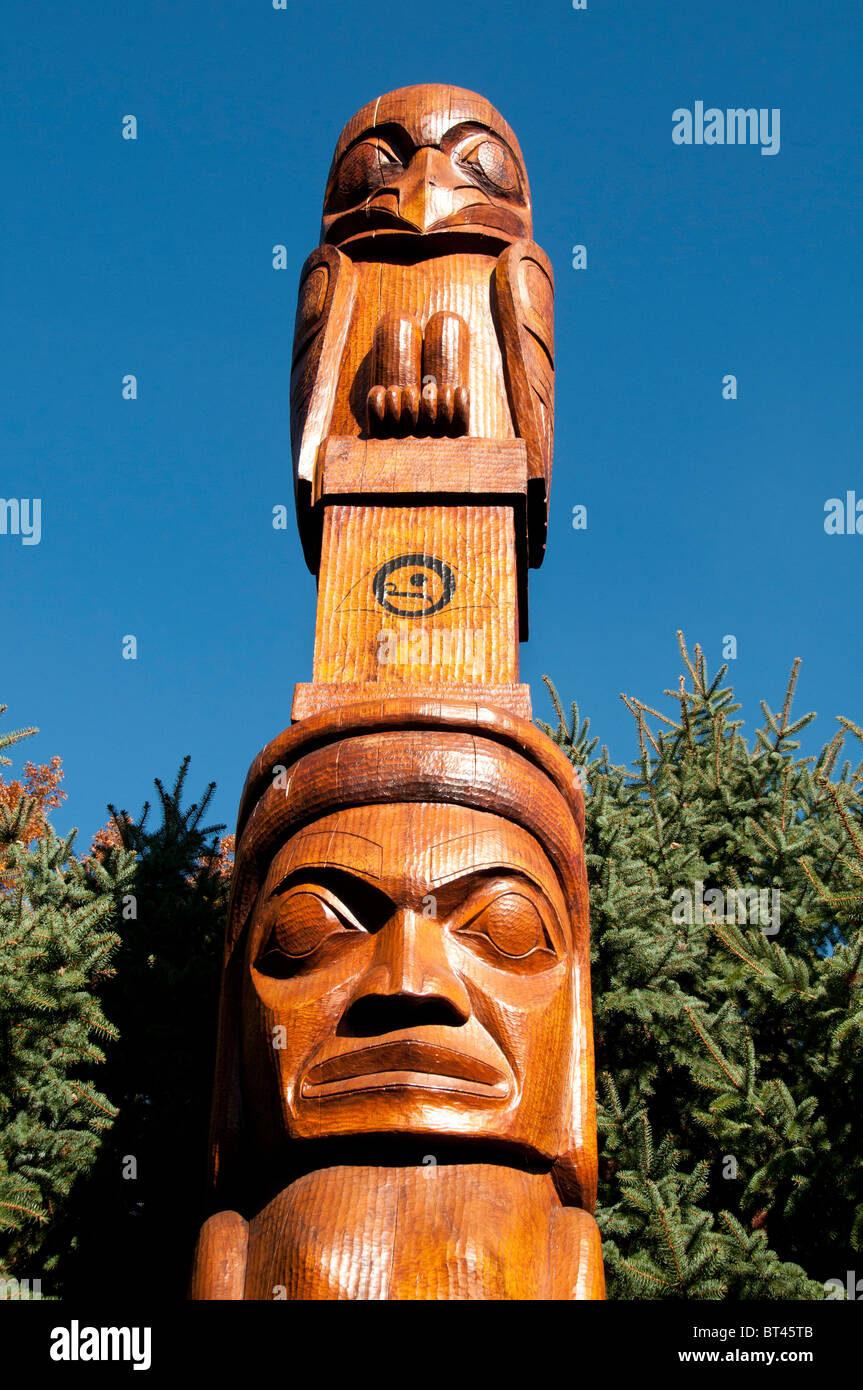A traditional Indian totem pole, carved on site.

Image details
Contributor:
Peter Steiner / Alamy Stock PhotoImage ID:
BT45TBFile size:
34.9 MB (2.3 MB Compressed download)Releases:
Model - no | Property - noDo I need a release?Dimensions:
2848 x 4287 px | 24.1 x 36.3 cm | 9.5 x 14.3 inches | 300dpiDate taken:
2010Location:
Rochester NY USAMore information:
Description: A traditional Indian totem pole, carved on site Caption: The totem pole was carved over a period of several weeks in Midtown Plaza by First Nations Artists. Walter Harris was born in 1931 in the northern B.C. village of Kispiox. At 26, Harris took on the name of Chief Geel and became the head chief of the village, a few years after the anti-potlatch law was set aside. The name of Geel belongs to the Fireweed Clan of the Gitxsan that is closely linked to the Killer Whale Clan of the coast. The interplay of the two family crests has been a major theme in Harris's art. One of his most memorable images is that of a breaching killer whale in which the spray from the blow hole has been replaced by a bouquet of fireweed. Other crests such as the grizzly bear and a unique figure known as "drum belly" are among the human and animal figures that Harris has explored throughout his career. It was in the 1960s that Harris began to pursue the career of an artist. As a partner in a small lumber mill and a practicing carpenter, he began building carving sheds and old style plank houses for the reconstructed village of 'Ksan at nearby Hazelton. With the opening of the Gitanmaax School of Northwest Coast Indian Art at 'Ksan, Harris came under the tutelage of a number of artists and craftsmen drawn from throughout the coast, whose task was to rekindle the traditional arts.